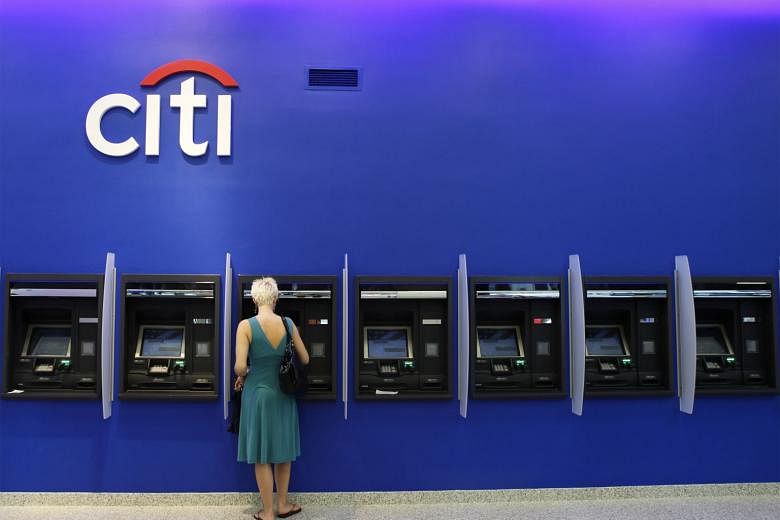NEW YORK (REUTERS) - Citigroup topped expectations for quarterly profit on Monday (July 15) as a tight lid on costs and strength in consumer lending helped the third-largest US bank counter weakness in its trading business.
New York-based Citi is the first major bank to report second-quarter earnings. Fellow Wall Street titans JPMorgan Chase & Co, Bank of America and Goldman Sachs report later in the week.
Bank stocks have lagged the market in recent weeks on concerns that net interest margins, a key measure of bank profitability, have peaked as the Fed gets ready to start cutting interest rates.
Citi's interest margin declined slightly to 2.67 per cent from 2.70 per cent a year earlier and 2.72 per cent in the first quarter of 2019. But the bank was able to make more money from its lending activities during the quarter and net interest income rose 2 per cent.
Overall revenue rose 2 per cent to US$18.76 billion, driven by 4 per cent growth in Citi's consumer business as customers spent more on their credit cards. Branded card revenue jumped 7 per cent as more customers initially attracted with promotional offers started paying interest. Interest-earning card balances rose 10 per cent.
Strength in its consumer sector helped offset softness in Citi's Wall Street business and corporate banking.
Trading revenue remained challenged for a third consecutive quarter. Fixed-income trading fell 4 per cent, excluding a gain from Citi's investment in Tradeweb, while equities revenue declined 9 per cent.
Corporate lending was 9 per cent lower than the year-ago period. Citigroup Chief Financial Officer Mark Mason told reporters on a call that trade tensions have discouraged some corporate customers from taking out loans.
"There's a bit of caution that many of the corporate clients are exercising, in particularly in Asia," Mason said.
He said Citigroup's loans to corporate clients in Asia were down about 5 per cent, partly because of aggressive pricing by competitors, but also because of "some of the trade tensions."
Overall, Citi continued to add loans and deposits in the most recent quarter, allaying concerns that a weaker economic outlook was hurting consumers' ability to borrow.
Firmwide loans rose 3 per cent to US$689 billion, while deposits increased 5 per cent, excluding foreign exchange fluctuations.
Banks have been under pressure to cut costs as a weaker economic outlook raised concerns about revenue growth. Mason said earlier this year the bank has accelerated some cost-cutting plans to cope with potential headwinds.
Expenses fell 2 per cent during the quarter, putting the bank on track to end the year on the high end of its projected US$500 million to US$600 million in annual savings, Mason said on a call with analysts.
Return on tangible common equity, one of the broadest measures of performance, improved more than one percentage point to 11.9 per cent, putting Citi in striking distance of its 12 per cent ROTCE goal for the year.
Citi's per-share earnings have been propped up by a lower outstanding share count due to large stock buy-back programs, but investors have been pressuring the bank to prove it can grow profit organically. Its share count declined 10 per cent in the second quarter from a year earlier.
The stock ended little changed on Monday, off 6 cents, or 0.08 per cent, at US$71.71.
Net income rose to US$4.80 billion, or US$1.95 per share, in the second quarter, from US$4.50 billion, or US$1.63 per share, a year earlier. Excluding the impact of a one-time gain related to Citi's investment in electronic trading company Tradeweb. the bank earned US$1.83 a share.
Analysts had expected a profit of US$1.80 per share, according to IBES data from Refinitiv.

